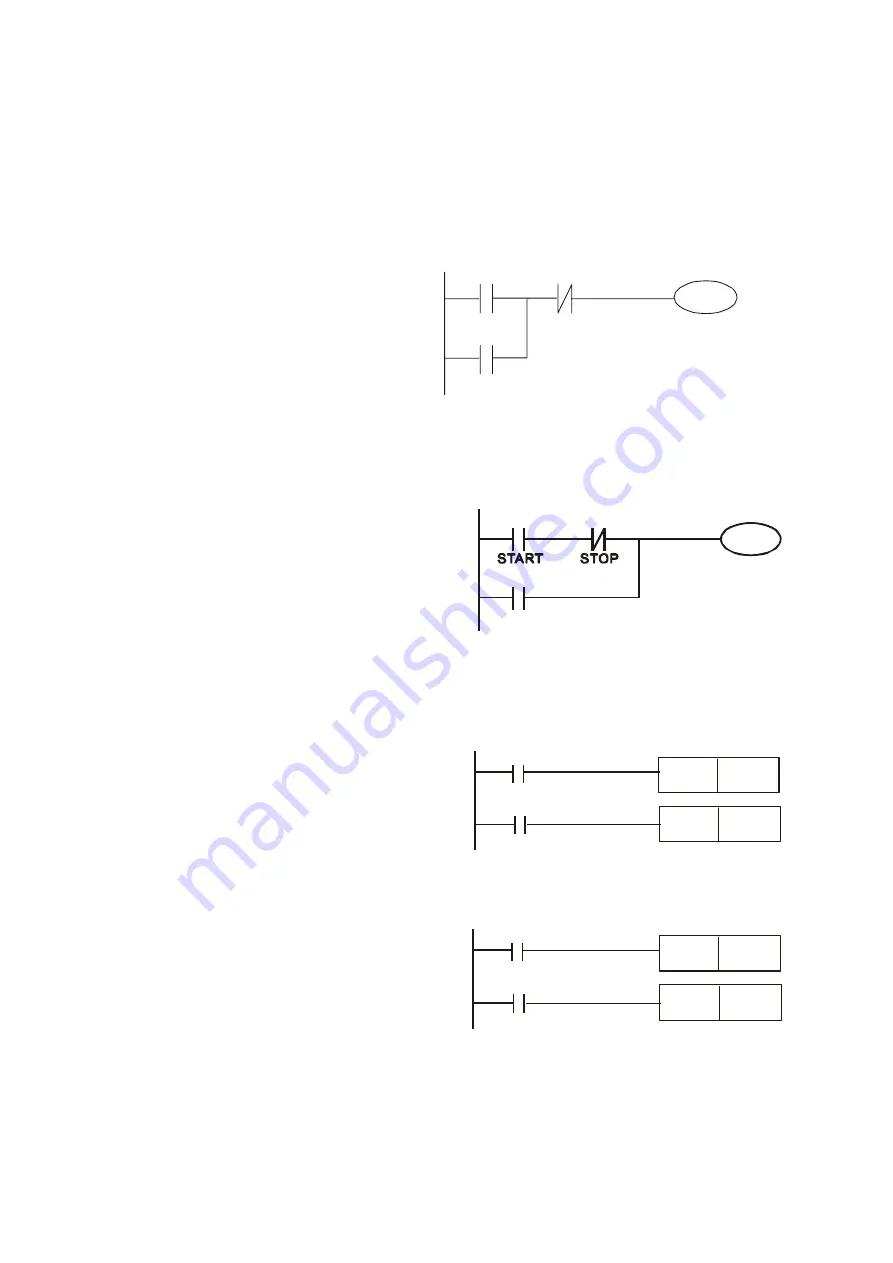
Chapter 14 PLC Function
|
C200 Series
14-15
14.4.4 The Example for Designing Basic Program
Start, Stop and Latching
In the same occasions, it needs transient close button and transient open button to be start and stop
switch. Therefore, if you want to keep the action, you should design latching circuit. There are
several latching circuits in the following:
Example 1: the latching circuit for priority of stop
When start normally open contact X1=On,
stop normally contact X2
=
Off, and Y1=On
are set at the same time, if X2=On, the coil
Y1 will stop acting. Therefore, it calls
priority of stop.
Y1
X2
X1
START
STOP
Y1
Example 2: the latching circuit for priority of start
When start normally open contact X1=On,
stop normally contact X2
=
Off and Y1=On
(coil Y1 will be active and latching) are valid
at the same time, if X2=On, coil Y1 will be
active due to latched contact. Therefore, it
calls priority of start.
X2
Y1
X1
Y1
Example 3: the latching circuit of SET and RST commands
SET
Y1
RST
Y1
X1
X2
Top priority of stop
The figure at the right side is latching circuit
that made up of RST and SET command.
It is top priority of stop when RST command
is set behind SET command. When
executing PLC from up to down, The coil Y1
is ON and coil Y1 will be OFF when X1 and
X2 act at the same time, therefore it calls
priority of stop.
It is top priority of start when SET command
is set after RST command. When X1 and
X2 act at the same time, Y1 is ON so it calls
top priority of start.
SET
Y1
RST
Y1
X2
X1
Top priority of start
The common control circuit
Example 4: condition control
X1 and X3 can start/stop Y1 separately, X2 and X4 can start/stop Y2 separately and they are all self
latched circuit. Y1 is an element for Y2 to do AND function due to the normally open contact
connects to Y2 in series. Therefore, Y1 is the input of Y2 and Y2 is also the input of Y1.
Call 1(800)985-6929 for Sales
deltaacdrives.com
sales@deltaacdrives.com
Call 1(800)985-6929 for Sales
deltaacdrives.com
sales@deltaacdrives.com
















































